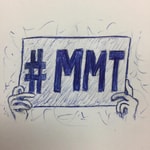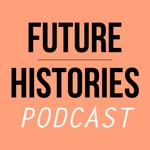Activist #MMT - podcast – Details, episodes & analysis
Podcast details
Technical and general information from the podcast's RSS feed.

Activist #MMT - podcast
Jeff Epstein
Frequency: 1 episode/12d. Total Eps: 98

Recent rankings
Latest chart positions across Apple Podcasts and Spotify rankings.
Apple Podcasts
🇬🇧 Great Britain - howTo
26/06/2025#81🇨🇦 Canada - howTo
25/06/2025#86🇬🇧 Great Britain - howTo
25/06/2025#37🇨🇦 Canada - howTo
24/06/2025#49🇨🇦 Canada - howTo
30/05/2025#99🇨🇦 Canada - howTo
29/05/2025#60🇬🇧 Great Britain - howTo
06/05/2025#98🇬🇧 Great Britain - howTo
05/05/2025#69🇬🇧 Great Britain - howTo
04/05/2025#39🇬🇧 Great Britain - howTo
28/04/2025#77
Spotify
No recent rankings available
Shared links between episodes and podcasts
Links found in episode descriptions and other podcasts that share them.
See allRSS feed quality and score
Technical evaluation of the podcast's RSS feed quality and structure.
See allScore global : 38%
Publication history
Monthly episode publishing history over the past years.
John Harvey reading Contending Perspectives: Chapter 3: Neoclassical Economics [EDITED]
dimanche 25 août 2024 • Duration 57:58
John Harvey reads the next chapter of his book, Contending Perspectives.
Here's the original video from where this audio came.
Here's a list of links to John reading every chapter (released so far) in his 2021 book Contending Perspectives.
I have edited both the video and audio to eliminate obvious mistakes, coughs, interruptions, and etc.
John Harvey's Contending Perspectives: Chapter 2: Economics as a scientific discipline [EDITED]
mercredi 31 juillet 2024 • Duration 01:15:34
John Harvey reads the next chapter of his book, Contending Perspectives.
Here's the original video from where this audio came.
Here's a list of links to John reading every chapter (released so far) in his 2021 book Contending Perspectives.
I have edited both the video and audio to eliminate obvious mistakes, coughs, interruptions, and etc.
Audio chaptersUse the below timestamps to navigate to each major section and occurrence in this section:
- 1:35 - Page 8: Chapter 2: Economics as a scientific discipline
- 3:25 - Page 8: Section: What is science?
- 4:40 - Page 9
- 10:03 - Page 10: A realistic version of science
- 17:39 - Page 13
- 30:13 - Page 17: Economics: Training and apprenticeship
- 44:01 - Page 22
- 58:38 - Page 27: Economics: Schools of thought
- 1:06:32 - Page 30: Economics: Primary and secondary standards of behavior
- 1:09:30 - Summary of table 2.1 on 32 (then skipping page 31, paragraph 2 through page 34, paragraph 2 – all of which is covered in future chapters)
- 1:10:43 - Page 34, paragraph 2
- 1:13:10 - Page 35: Conclusions
- 1:14:55 - Final comments
Episode 147[2/2]: Brian Romanchuk: The secondary market through the eyes of a bond analyst
mardi 29 août 2023 • Duration 01:15:52
Welcome to episode 147 of Activist #MMT. Today's the second in my two-part conversation with author, mathematician, and bond analyst Brian Romanchuk (Twitter/RomanchukBrian), on the basics of the secondary market and how it relates to the primary market. Today in part two, Brian continues describing the participants in the secondary market, why they do what they do, and shares several anecdotes from his many years of experience as a bond analyst for fixed income recipients in Canada.
A fuller introduction can be found before part one. But for now, let's get right back to my conversation with Brian Romanchuk. Enjoy.
A fuller introduction can be found at the beginning of part one, but for now, let's get right back to my conversation with Brian Romanchuk. Enjoy.
Audio chapters- 4:03 - The internet allows you to do a large quantity of small transactions BUT everyone can see it (it's publicly viewable)
- 4:47 - "Reallocation between bonds and equities."
- 8:19 - What is the population of who purchases bonds?
- 26:24 - The rich don't just buy bonds themselves, as individuals.
- 28:22 - Municipal bonds don't play a large role in the macro economy
- 30:01 - Z-1 document from the Federal Reserve
- 32:11 - Who exactly are the supposed bond vigilantes? (The really powerful bond purchasers would never say anything publicly. It would be a breach of their fiduciary duty! Anyone talking on the news is only talking for themselves.)
- 33:57 - The most important players keep their mouth shut
- 36:07 - Speaking publicly is marketing and manipulation
- 41:40 - Anthropomorphic
- 45:08 - What people say, when not under legal obligation to be truthful, is sometimes manipulation and marketing.
- 49:03 - Reasonable people know the national government isn't really going to default
- 55:28 - Bringing it back to the beginning: The three core reasons why the government, not the market, is in control
- 58:47 - How would everything we've discussed change is we lived in a ZIRP world?
- 1:03:12 - ZIRP is bad only in the sense that
- 1:15:15 - Duplicate of introduction, with no background music (for those with sensitive ears)
Episode 146[1/2]: Brian Romanchuk: The secondary market through the eyes of a bond analyst
lundi 31 juillet 2023 • Duration 01:07:01
Welcome to episode 146 of Activist #MMT. Today I talk with author, mathematician, and bond analyst Brian Romanchuk, on the basics of the secondary market and how it relates to the primary market. Brian starts with a brief tutorial of how bonds are priced, which is seen very differently from the points of view of the primary and secondary markets. For an in-depth treatment of this topic, you can listen to episodes 30 and 31 of MMT Podcast with Steven Hail.
(Here's a link to part two. A list of the audio chapters in this episode can be found right below [above the full-question list].)
Brian then describes bonds (and more broadly, securities) in general, the population of who buys and sells them, some of the reasons why they are bought and sold, and several anecdotes of how it all happens.
What can be said is this: rich people rarely if ever buy US treasuries on their own, as individuals. Additionally, the biggest players in securities trading never speak publicly in order to prevent jeopardizing their advantage – they keep their mouths shut. These two facts alone put a huge hole in the idea of so-called bond vigilantes. Although I'm not necessarily interested in the idea of bond vigilantes, it's one of the most obvious and common myths that comes up regarding the secondary market.
Whatever the case, the idea that the market can somehow overrule the national government is clearly false. This is for at least the following three reasons:
- only the national government can create and delete its own bonds.
- Only the national government can create and delete its own money – which is required to purchase those bonds.
- And the national government (for countries such as the United States, UK, Australia, Japan, and Canada) have little to no foreign denominated debt, which means they do not offer to convert their money into anything else.
What this means is that the national government, through the collective action of its citizens (US!), has the power to stand up to the market even if they somehow object to the actions of that government.
The only way the market can overpower the national government is if the government chooses for it to be that way – such as when representatives and regulators are bought off by the biggest players in that market. This is further bolstered by the populace being sufficiently duped into believing it all to be "unfortunate, but necessary." This is a primary battle-front in the centuries-long war between rich and poor, which, unfortunately, the rich have all but won.
And now, onto my conversation with Brian Romanchuk. This is part one of a two-part conversation. Enjoy.
In order to preserve both my podcast and my sanity as I proceed through Torrens University and Modern Money Lab's graduate program in MMT and ecological economics (🦉🤝🌍), I've slowed my podcast from one episode a week, to once a month. For as little as a dollar a month, patrons of Activist #MMT can hear all three parts with Brian right now. You can start by going to patreon.com/activistmmt.
Resources- The Federal Reserve's Z1 document
- Brian's July 2023 Q&A with Torrens University students
- 5:33 - I don't care about bond vigilantes per es, it's just the most common (mythical!) topic discussed.
- 7:43 - The core reasons why the government, not the market, is in charge.
- 11:18 - The definition of money. Even a pizza coupon is money, but not as understood by the general public.
- 12:04 - A government bond is a security, governed by securities laws.
- 12:49 - The basics of price and yield
- 21:41 - Price and yield versus par value and coupon rate – terms as used in the primary versus secondary market
- 24:45 - Computer era versus pre-computer era
- 29:48 - despite lots of corruption and instability, he will always get $100 back from that.
- 33:14 - Primary market
- 36:05 - "Basis points"
- 44:34 - Your company benefitted fixed-income earners
- 47:11 - Does your company know when bonds are purchased from primary or secondary dealers? Does the distinction matter?
- 52:21 - John Harvey: the internet ended personal connection in trading
- 1:00:21 - The internet allows you to do a large quantity of small transactions BUT everyone can see it (it's publicly viewable)
- 1:01:06 - "Reallocation between bonds and equities."
- 1:04:24 - Duplicate of introduction, with no background music (for those with sensitive ears)
Episode 145 [3/3]: Emily Ruhl: Religiously-defensible, divinely-supported genocide
jeudi 29 juin 2023 • Duration 58:50
Welcome to episode 142 of Activist #MMT. Today's the final part of my three-part conversation with Emily Ruhl, on his 2008 paper, Religiously-defensible, divinely-supported genocide. Today we discuss principles seven to ten. My full and detailed question and summary list can be found in the show notes to part one. Also, be sure to see the list "audio chapters" in all three parts (look below!) to find exactly where each topic is discussed.
You can financially support this podcast by going to Patreon.com/ActivistMMT. For as little as a dollar a month, all patrons get exclusive, super-early access to several full episodes and some unique patron-only opportunities, like asking my academic guests questions (like my episodes with Dirk Ehnts, John Harvey, and Warren Mosler). In addition to this podcast, patrons also support the development of my large and growing collection of learn-MMT resources, and my journey through the Torrens graduate program. To become a patron, you can start by going to Patreon.com/ActivistMMT. Every little bit helps a little bit, and it all adds up to a lot. Thanks.
And now, let's get right back to my conversation with Emily Ruhl. Enjoy.
Audio chapters- 3:01 - Different levels of Nazis: killing versus deciding who to kill (doctors, commandants, soldiers)
- 6:44 - Symbols as an expression and reminder of power (pledge of allegiance)
- 8:02 - Charismatization: The charisma of the individual, and of the world (institutions) around him — including reactions to him.
- 18:17 - Calmly stirring up the crowd into a frenzy, and further into genocide.
- 19:03 - The pursuit of Atlantis and the holy grail (Indians Jones)
- 28:10 - Nazi pseudo-religion is a tool to justify genocide. False economics is a tool to justify mass neglect and exploitation.
- 34:44 - Connecting false economics and Nazi Germany's pseudo-religion
- 38:47 - In the national context, there is no such thing as "finding money" Their decision to do something IS the the funding.
- 41:38 - Final question: Polanyi, "latent anti-Semetism" versus venting frustrations from a lifetime of mass neglect and exploitation
- 51:00 - Reality of hyperinflation, the treaty of Versailles
- 52:28 - Final comments
- 54:44 - Goodbyes
Episode 144 [2/3]: Emily Ruhl: Religiously-defensible, divinely-supported genocide
dimanche 28 mai 2023 • Duration 56:09
Welcome to episode 144 of Activist #MMT. Today's part two of a three-part conversation with historian, author, and Harvard master's graduate, Emily Ruhl, on her new paper and master's thesis, In League with the Devine: How Religion Influenced Nazi Perpetrators of the Holocaust. You will find my detailed question list at the bottom of the show notes for part one. Also, be sure to see the list "audio chapters" in all three parts (look below!) to find exactly where each topic is discussed.
A full introduction can be found at the beginning of part one, but for now, let's get right back to my conversation with Emily Ruhl. Enjoy.
Audio chapters- 2:43 - German pseudo-religion: three parts: anti-Semitism, Blut und Boden (blood and soil), and Volksgemeinschaf (the German worldview)
- 3:50 - Racism is an impossible concept. The only way to preserve the German Aryan theory is to exterminate anyone not "definitely" Aryan.
- 7:21 - The order in which you kill changes it from murder to sanctioned by God
- 11:12 - Religion is both coercion and a salve once what they were coerced to do is done.
- 20:31 - The biggest bias in sources is the power of those who created (wrote, filmed, etc.) it.
- 29:21 - "No punishment" for those refusing to kill, but only if they didn't threaten the regime.
- 30:12 - Religious symbols: pins (SS lightning bolts), belt buckles, architecture, white doctors coats.
- 44:28 - Symbols in architecture
- 48:59 - Different levels of Nazis: killing versus deciding who to kill (doctors, commandants, soldiers)
- 55:30 - Duplicate of introduction, with no background music (for those with sensitive ears)
Episode 143 [1/3]: Emily Ruhl: Religiously-defensible, divinely-supported genocide
samedi 29 avril 2023 • Duration 01:09:39
Welcome to episode 143 of Activist #MMT. Today I talk with historian, author, and Harvard master's graduate, Emily Ruhl, on her new paper and master's thesis, In League with the Devine: How Religion Influenced Nazi Perpetrators of the Holocaust. This is the first of a three-part episode. You will find my full and detailed question list at the bottom of today's show notes. Also, be sure to see the list "audio chapters" in all three parts to find exactly where each topic is discussed.
(Here are links to parts two and three. A list of the audio chapters in this episode can be found right below [above the full-question list].)
(In order to preserve both my podcast and sanity as I proceed through the Torrens graduate program, I've decided to slow my podcast from one episode a week to once a month.)
The Nazi Party started by trying to resist and reject all religion, but soon, religion became a fundamental part of the Party's strategy of coercing and propagandizing everybody, from members of the public, to the highest ranking figures in both religious and political institutions, into accepting the brutal and systematic murder of eleven-million souls. The Nazi religion took elements of Christianity, Protestantism, and Paganism, to make one geared not to brotherly love, but primarily to erasing non-Aryans from the Earth.
This Nazi pseudo-religion served both as coercion – you must kill the unworthy, or at least stand back while others do – and also as a salve, to come to terms with what you've just done. As you'll hear in the cool quote for part two (the first minute before the opening music), that salve can make the difference between sanity and insanity, and life and death.
The Nazi's didn't want to murder eleven million people, they had to, because God said they had to. It was "unfortunate, but necessary." My primary goal for this interview is to demonstrate how this is parallel to mainstream economics, which is also a tool to justify suffering, this time in the form of austerity. Instead of a gun to the head at point blank range, austerity is mass deprivation and exploitation, resulting in a slow and torturous death by despair, starvation, exposure, and untreated sickness and injury – not to mention wasted potential.
We currently have the ability to provide all with what they desperately need, including healthcare, education, decent food and shelter, un-poisoned water, and breathable air. As illuminated by Kate Raworth's doughnut, if we are to continue existing as a species, then we must provide the desperate with what they most desperately need. At the same time, we also have to stop the very few on top from using the vast majority of our precious and limited resources to needlessly lavish themselves.
Unfortunately, we are instead digging ourselves into an even deeper ecological crisis, when we should be getting off fossil fuels entirely, and restructuring society so we don't require as much. On our current path, in the not-too-distant future, it may indeed become unfortunate but necessary to choose who must be deprived in order for the rest to live. Of course, given our obscene and still growing inequality, the most powerful few will be the ones to make those decisions, and the least powerful many will be the sacrificed. This is the lifeboat economics of the tragedy of the tragedy of the commons. Instead of the around eleven million murdered by the Nazi Party, mainstream economics is little more than a religion to justify what may ultimately result in the death of not millions, but billions. Austerity is genocide at a slower pace.
As if riding in a bus hurtling towards a cliff, we as a species currently face a binary choice, between having a terrible accident, and plunging off into oblivion. As Mark Twain said, "History never repeats itself, but it does often rhyme." There is still time to learn from that history. We can choose another path.
On a completely unrelated side note, while attending her master's program, writing her master's thesis and working full time, Emily also wrote… an entire fantasy novel. You can find out more about it, and read the entire first chapter, at her website, emilyruhlbooks.com.
In order to preserve both my podcast and my sanity as I proceed through Torrens University and Modern Money Lab's graduate program in MMT and ecological economics (🦉🤝🌍), I've slowed my podcast from one episode a week, to once a month. For as little as a dollar a month, patrons of Activist #MMT can hear all three parts with Emily right now. You can start by going to patreon.com/activistmmt.
And now, onto my conversation with Emily Ruhl. Enjoy.
Resources- Dirk Ehnts 2017 book, Modern Monetary Theory and European Macroeconomics, from the introduction: The crash of 1929 was a direct consequence of weak financial sector regulation in the US, and it had world-historical consequences. It caused the economies not only of the US and Canada to melt down, but also those of many other nations financially linked to the US – including the German economy, whose deflationary collapse in 1929 led to the election of Adolf Hitler by a desperate electorate in 1933, the same year Glass–Steagall was passed. Had Glass–Steagall been legislated ten years earlier, the Second World War would most likely never have happened.
- Asad Zaman 2016 lecture entitled Macroeconomics, at around the 33-minute mark, states that had the right economic theories been implemented by those in power, that the Great Depression would have never occurred.
- My post summarizing Polanyi’s 1941 book (2001 edition), The Great Transformation
- My interview with Asad Zaman on Polanyi. See especially the eight-minute, 35-seconds mark in part one (see the audio chapters at the bottom of the show notes)
- 2016 book by Christopher Browning, Ordinary Men
- Daniel Goldhoggen Hitler's Willing Executioners
- Calvin University online archives - start with this Google search for Calvin University online archives nazi
- 7:12 - Hellos
- 8:49 - Overview of the paper
- 10:46 - Elaborating on the gap in the literature
- 15:30 - Harvard online masters degree
- 16:40 - Her experience writing the paper, the major sources, and the consequences of the pandemic
- 20:12 - Structuralist approach to writing the paper (interconnectness)
- 25:04 - The bias in even primary sources (the art of bias)
- 30:02 - Lebensunwertes Leben: Life unworthy of living
- 37:06 - Three theories why Jews are lebensunwertes leben
- 44:56 - Christian verses Catholic
- 45:45 - Nazi party desired to be non-religious. Religion became critical.
- 54:07 - German pseudo-religion: three parts: anti-Semitism, Blut und Boden (blood and soil), and Volksgemeinschaf (the German worldview)
- 59:40 - Racism is an impossible concept. The only way to preserve the German Aryan theory is to exterminate anyone not "definitely" Aryan.
- 1:04:30 - Duplicate of introduction, with no background music (for those with sensitive ears)
...to come...
My full question list META QUESTIONS- Introduce yourself. Your background and interests that led you to this paper. How it applies to your masters and career goals. (Be careful with what you want reveal to protect your job.)
- Can you give an overview of your paper?
- What research already exists related to this topic and what gap does your paper fill?
- Describe your experience writing the paper. The sources you used, the limitations of doing much of it during the pandemic, what would have been different if there wasn't a pandemic, the fact that you read German.
- You used a structuralist approach in your paper. Can you define that term and how it affected your paper and approach?
- Your evidence was primary sources such as diaries, testimonies, journals, books, documentaries, and propaganda movies. All these things however, were written in a certain context. For example, trial testimony captures the words of someone whose primary goal is to avoid legal consequences. Propaganda videos were obviously to manipulate in favor of those on top. Even a personal journal could be written in such a way to preserve their sanity such as by avoiding suicidal thoughts and actual suicide. How do you filter through that bias and understand reality? How do you trust even primary sources?
Some questions to answer, some summaries and insights to elaborate on.
- (I'm a classically trained singer learned how to pronounce German, SOUND like I can read it/speak :)
Lebensunwertes leben means "life unworthy of life." We're going to talk about Jews in the next question, but in general, what lives were deemed unworthy by Nazis, and why? Conversely, how was a worthy life defined? (Aryan, and specifically German Aryan.) Who and what defines these things? Can you also talk about the history of these concepts? These definitions weren't invented in Nazi Germany. - There are three major theories of why Jews are considered unworthy of life: the Christian view was that Jews killed Christ (even though Christ was Jewish; his final supper was a Passover seder!) The protestant view is from Martin Luther who just simply said that Jews are devils and they should be killed and their homes destroyed (resulting in Kristallnacht). It was also strongly asserted that all of Germany's ills were primarily caused by Jews. Can you elaborate on this? How were three such disparate theories used in concert?
- The Nazi party originally intended to be secular (non-religious) but ended up having to tolerate some of it for political expediency. If they didn't, they would have alienated a large part of the population. In other words, the Party accepted what they didn't want to accept, in order to not be destroyed. Conversely, religious institutions, from churches, all the way through the Vatican, had to accept Nazi pseudo-religion, in order for the church to survive.
- German pseudo-religion is built on three foundations: Above all is anti-Semitism, and also blut und boden (blood and soil), and volksgemenschaft weltanschauung (the German world-view). Can you define and discuss each of these?
- On page 1 of the introduction, you introduce someone named Franz Stangl who was a police superintendent at the Euthanasia Institute at Hartheim (a heck of an institution!). He explained how he only shot children who were motherless, saying it was "soothing to my conscience to release children unable to live without their mothers." As you point out, the word "release" means redeem or save in a religious sense. Therefore, his killing the child made him a savior or redeemer in the eyes of God.
What shocked me about this was that he only killed children after their mothers were first killed by one of his comrades. So by simply REVERSING THE ORDER in which you kill a mother and her child, it changes from an immoral act of murder to an act of mercy sanctioned by God. - Stangl also talks about how a Catholic clergy advocated for this "mercy killing" of the motherless child (that Stangl and his partner MADE motherless!). Stangl said in a 1971 interview, "Here was a Catholic nun, a mother superior, and a priest. And they thought it was right. Who was I then, to doubt what was being done?" So religion, even God himself, was utilized as a tool to justify and encourage mass murder. In addition, religion was also the excuse given to the murderer so they could clear their conscience after the act.
- Building on the previous question and returning to biases in primary sources: One of the biggest biases of all is power. It is REQUIRED to say that killing the unworthy is necessary (and commanded by God) in order to not be killed yourself. Even saying that someone is unworthy is required in order to not become unworthy yourself!
This is true for average people, all the way through highest levels in both religion and government. How much did the clergy mentioned by Stangl really believe what they were saying, and how much of it was that they were protecting themselves and the church from being destroyed by the Nazi party? How threatened did the clergy feel?
In other words, the fact that Stengel felt permission from the clergy is really his being COERCED by religion, because those religious figures in turn were coerced by the most powerful figures in Germany and the Nazi party. - It turns out that religion and religious symbols became a core element of its strategy to propagandize the public. Can you talk about the religious symbolism in architecture, clothing, belt buckles, pins, and how these things come from both the pagan and Christian religions. (Paganism is basically NOT Christian. NOT one of the dominant religions. This is equivalent to the term heterodox in economics, which is the economics that is NOT mainstream.)
Another important religious symbol was the white outfits worn especially by concentration camp doctors, and secondarily by commandants. - Before the next question: I want to say a haunting quote I'm reminded of by the white outfits and the purity and moral and religious authority it gave to doctors and commandants, by Zygmunt Bauman in his book, Modernity and the Holocaust: "It was not illiterate savages, but graduates of the finest educational systems of the West who designed the gas chambers used to burn millions of innocent men, women and children in Germany."
White outfits symbolizes these people as gods, because they alone decide who lives and who dies (and who is tortured and not tortured).
There were different levels, such as how doctors killed people directly AND made the decision to do so; how commandants decided who should be killed but didn't do it themselves; and soldiers killed people but only under the command of an authority figure. - In footnote 75 on page 26, someone named Albert Speer said he found "Hitler to be "deeply exciting" as a result of the "intermingling of frenzy and rationality" with which he spoke. In the footnote, it says, "listening to Hitler's speeches convinced him to commit himself to the party."
The speech he watched almost certainly included the crowd's responses to it. Not unlike the Beatles and their crowds of fawning women.
Can you speak about the concept of charismatization, of both Hitler the individual and the party and its institutions, and how all this was an important part of manipulating and propagandizing the public, to achieve the Party's goals? - A tangent but a purposeful and important tangent for the Party.
A major goal of the SS was dedicated to finding places and objects that could prove "the genetic and geographic roots of Aryans." Two major examples being Atlantis and the Holy Grail. The entire Indiana Jones movie series was based on this concept, especially part three, which was precisely a race to find the Holy Grail before the Nazis could.
As you say in the paper, "the Aryan race… was believed to be descended from the deities who once lived in Atlantis." This is all complete fiction (they obviously never succeeded), yet the very pursuit validated and reinforced their beliefs in the eyes of the public (surely they wouldn't waste THAT many resources and THAT much time on utter nonsense!).
The Holy Grail in particular was pursued not just as justification of their beliefs but also as a weapon to "repel the darkness" of those to be considered unholy.
"If the SS found the Holy Grail, it would have appeared as though God himself had guided the Nazis to its location, thus implying that the Nazis had the approval of Heaven. This, in turn, would have depicted the actions of the Nazis including the genocide they initiated--as being morally correct and aligned with the desires of God."
Can you elaborate on this? - Mainstream economics is, like religion, a tool to justify genocide, albeit in a much less direct and overt fashion. This is especially true as our ecological crisis looms. That's the parallel I want to draw with this interview. (Mainstream economics, really, IS a religion, and Harvard's president is one of its leading acolytes.) You did a bit of reading on MMT, I wanted to get your thoughts on MMT in general, compare that to what you believed to be true before we met, and if it relates in any way to your paper.
- The other connection between our two topics is that, if the New Deal were implemented in the late 1800s, then WWI and the rise of Hitler and the Nazi party would have never happened. I've heard this from two PhD economists: the first is Dirk Ehnts in his book MMT and the European Monetary Union, and the second is Asad Zaman in his macroeconomics lecture, both of which will be linked in the show notes.
A point made in Karl Polanyi's 1942 book, The Great Transformation, is that fascism is not a movement unto itself. There's no "strength" in fascism or fascists. Rather, fascism only exists to fill the vacuum left by the suffering wrought by neoliberalism (and more generally, the centuries of mass neglect and exploitation by the obscenely rich). So, the hatred by regular Germans of Jews (and other "unworthy" people) is in fact largely a response to the neglect and abuse *they've* experienced at the hands of those on top. They've just been deceived into thinking that society's ills are PRIMARILY caused by those with the least money and power.
This gives those on top protection, because it provides their victims with an outlet for venting their rage, but in a way that allows them to remain in power. Citizens are: deceived into hurting themselves, so those on top don't have to.
I say this, because it's both suggested and directly asserted by some of the figures in your paper that hatred of Jews and other "unworthies" was always lurking in the hearts of Germans, and I don't think that's true.
Modern Money Doughnuts: Torrens Student Susan Borden (season 3, episode 3, audio only)
samedi 22 avril 2023 • Duration 01:00:59
Welcome to to the audio of season 3, episode 3 of Modern Money Doughnuts (MMD), hosted by Steven Hail and Gabrielle Bond. In series 3 of Modern Money Doughnuts, we meet some of the students from the Modern Money Lab and Torrens University Australia Masters Degree in the Economics of Sustainability.
Today we talk to Susan Borden, one of our amazing students, about what she's learning in the course, what we're discussing and working on, and what motivated her to take up this challenge. Plus we'll ask our guests about their working life and activism and what they do for fun and regeneration.
What have Doughnuts to do with modern money? Quite a lot as it turns out. In Modern Money Doughnuts, Gabrielle Bond and Steven Hail explore the relationships between #MMT and doughnut economics.
(All episodes of Modern Money Donuts can be found on this page by Modern Money Labs.)
Here's the video from which this audio comes from. (The audio is unedited.)
MMD is hosted by Modern Money Lab, and the audio podcast is produced and hosted by Activist #MMT. So if you'd like to be automatically notified of each new MMD episode, then subscribe to Activist #MMT on your favorite podcast platform.
Ep142 [3/3]: Scott Fullwiler: Modern Central Bank Operations: The General Principles [principles 7-10 of 10]
samedi 25 mars 2023 • Duration 01:00:46
Welcome to episode 142 of Activist #MMT. Today's the final part of my three-part conversation with Scott Fullwiler, on his 2008 paper, Modern Central Bank Operations: The General Principles. Today we discuss principles seven to ten. My full and detailed question and summary list can be found in the show notes to part one. Also, be sure to check out the list of audio chapters at the bottom of today's show notes, to find precisely where each principle, and otherwise, can be found.
(A list of the audio chapters in today's episode can be found at the bottom of this post.)
Principal seven, which refers to a world without a floor system (QE is an example of a floor system), is that a central bank can change its target interest rate by simply announcing it. This is contrary to the false idea that the central bank can only set a new target rate by overwhelming the system with reserves in order to push the rate higher, or push it lower by starving the system by selling a very large amount of bonds. This implies the central bank and its government to be little more than a very large currency user. Also, the "liquidity effect" is the false idea that the mere existence of reserves makes banks want more of them, and that this in turn results in more lending to customers. (This is essentially Say's law, which is the false idea that supply causes demand.)
Principal eight is that the amount of total reserves in the system is primarily due to the central banks method of interest rate management. If a central bank chooses a floor system like QE, then there will be a whole lot of reserves in the system. If they also choose restrictive reserve requirements, then there will be even more as banks demand more in order to meet them. If there was no floor system or reserve requirements at all, then the total amount in the system will be greatly reduced. In this case, once again, the aggregate level will be controlled endogenously – by the rigidness of banks needing to settle payments each day, which is primarily dependent on the behavior of actual humans in the real economy (the non-government sector).
Principles nine and ten basically assert that the central bank is in the unique position of being a currency issuer. Only the central bank, via the execution of fiscal policy, can create net financial assets – which is money we don't have to pay back. Commercial banks can only create credit, which must always be paid back, plus interest. Commercial banks – and indeed the entire financial system and economy – depends on the central bank because: we have to pay taxes which can, ultimately, only be paid with reserves, which can only be done through the banking system.
Also, banks are legal franchises of the state. If a commercial bank tried to bypass the central banking system entirely, it wouldn't be a bank for long. In the same way, you could try and call yourself a bank, but unless you're legally sanctioned and accepted as one by the central bank, you wouldn't get very far.
You can financially support this podcast by going to Patreon.com/ActivistMMT. For as little as a dollar a month, all patrons get exclusive, super-early access to several full episodes and some unique patron-only opportunities, like asking my academic guests questions (like my episodes with Dirk Ehnts, John Harvey, and Warren Mosler). In addition to this podcast, patrons also support the development of my large and growing collection of learn-MMT resources, and my journey through the Torrens graduate program. To become a patron, you can start by going to Patreon.com/ActivistMMT. Every little bit helps a little bit, and it all adds up to a lot. Thanks.
And now, let's get right back to my conversation with Scott Fullwiler. Enjoy.
Audio chapters- 5:42 - It would mean they could buy reserves for low interest (penalty rate) and then earn high interest for holding it (IOR)
- 7:59 - Principle 7: There is no "liquidity effect" associated with central bank changes to its operating target. (Apologies for the very long question! I got it wrong at first, and scrambled to rewrite it at the last minute.)
- 20:40 - Principle 8: The quantity of reserve balances in circulation is primarily determined by the central bank's METHOD of interest-rate maintenance.
- 27:50 - Principle 9: Under current operating procedures, the central bank's balance sheet expands and contracts endogenously while these changes neither create nor destroy net financial assets for the non-government sector. (The banks can't create or delete reserves, only the central bank can.)
- 30:01 - Clarifying this sentence in principle 9: Outside of a floor (QE) system, the monetary base can only be determined endogenously (by commercial banks and potential borrowers).
- 31:10 - Thoughts on his approach to principle ten.
- 32:32 - Principle 10: The central bank's interest rate target "matters" because banks use reserve balances to settle payments. (The central bank is a currency issuer. Commercial banks are currency users.)
- 36:52 - Reservations about the final paragraph in principle ten. (Also, assuming away everything that disagrees with you, and equating sharing sources that refute you with "appealing to authority.")
- 39:52 - If you could, who would you appoint to government positions (Treasury, Federal Reserve, etc)?
- 41:48 - Assuming they're there, what changes would we see? (Your favorite policy plus the job guarantee, or your favorite policy plus the involuntary unemployment)
- 42:46 - Assuming they're there, what changes would we see in monetary policy?
- 47:08 - Macro-prudential regulation instead of one target interest rate.
- 49:31 - Scott will be teaching macroeconomics at Torrens University (for my MMT-plus-ecological economics masters program) starting February. I'll be taking it June 2023. How he's designing the course.
- 53:48 - Goodbyes
- 56:51 - Duplicate of introduction, with no background music (for those with sensitive ears)
Modern Money Doughnuts: Torrens Student Nathan McMillan (season 3, episode 2, audio only)
lundi 6 mars 2023 • Duration 39:57
Welcome to the audio of season 2, episode 2 of Modern Money Doughnuts (MMD), hosted by Steven Hail and Gabrielle Bond. In series 3 of Modern Money Doughnuts, we meet some of the students from the Modern Money Lab and Torrens University Australia Masters Degree in the Economics of Sustainability.
Today we talk to Nathan McMillan, one of our amazing students, about what he's learning in the course, what we're discussing and working on, and what motivated him to take up this challenge. Plus we'll ask our guests about their working life and activism and what they do for fun and regeneration.
What have Doughnuts to do with modern money? Quite a lot as it turns out. In Modern Money Doughnuts, Gabrielle Bond and Steven Hail explore the relationships between #MMT and doughnut economics.
(All episodes of Modern Money Donuts can be found on this page by Modern Money Labs.)
Here's the video from which this audio comes from. (The audio is unedited.)
MMD is hosted by Modern Money Lab, and the audio podcast is produced and hosted by Activist #MMT. So if you'd like to be automatically notified of each new MMD episode, then subscribe to Activist #MMT on your favorite podcast platform.









